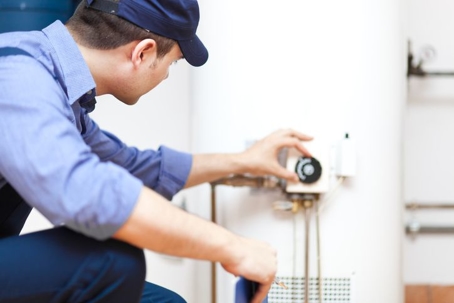You may already be aware that there are two types of water heaters: traditional tank heaters and tankless systems. “But which is better?”, you may be asking yourself. Trick question: traditional and tankless water heaters both have their pros and cons, it all depends on what you are looking for. Keep reading for what you need to know about the advantages and disadvantages of tank water heaters and tankless water heaters, courtesy of our experts at Carter Quality Plumbing.
What to Know About Traditional Vs. Tankless Water Heaters
- Energy Efficiency: Traditional and tankless water heaters can both be powered by multiple fuel sources, such as gas and electricity. And thanks to advances in modern technology, you can find a fairly energy-efficient model of either type of system. However, for better efficiency overall, it’s better to go with a tankless water heater. Because traditional heaters store your water in a tank, they have to heat it over and over again anytime someone turns on a tap. This consumes a fair amount of energy. Tankless systems, conversely, heat your water as it travels through your pipes, meaning they can save you a good amount on your larger energy bill.
- Installation & Repairs: The good news is that both traditional and tankless water heaters are fairly easy to install. However, the initial cost of installation with tankless water heaters is far more than with traditional systems. Moreover, tankless systems are much more difficult to repair when they do break down. That said, it’s important to note that tankless systems require fewer repairs and less maintenance overall than traditional systems. They may also be a slightly better investment, depending on your needs, as they can last up to 20 years, whereas the lifespan of a traditional water heater is usually 10-22 years.
- Size: One major advantage of tankless systems is that they are small, and therefore extremely easy to access. Traditional water heaters, meanwhile, come in a full range of sizes to accommodate various household’s needs. If you live in a small home or apartment, with only one other person, you will probably want to install a water tank that holds roughly 23-36 gallons. Conversely, if you live in a larger home where multiple people are likely to be running water at once, you will probably need a water tank that holds approximately 50-80 gallons. The more important metric for tankless systems is flow rate, which is measured in GPM (gallons per minute.) The larger your home is, the higher GPM rate your tankless heater will need to have.
- Comfort: As a rule of thumb, you would think that tankless systems are better for your overall comfort, considering that they are designed to provide an endless supply of hot water on-demand. Yet tankless systems have not traditionally been a good fit for larger households, often struggling to provide heat to multiple places at the same time. However, thanks to advances in modern technology, traditional and tankless water heaters are now a viable option for homes big and small.
For more information about water heaters or to schedule service, call Carter Quality Plumbing today at (803) 998-2270, or click here to send us a message online.

